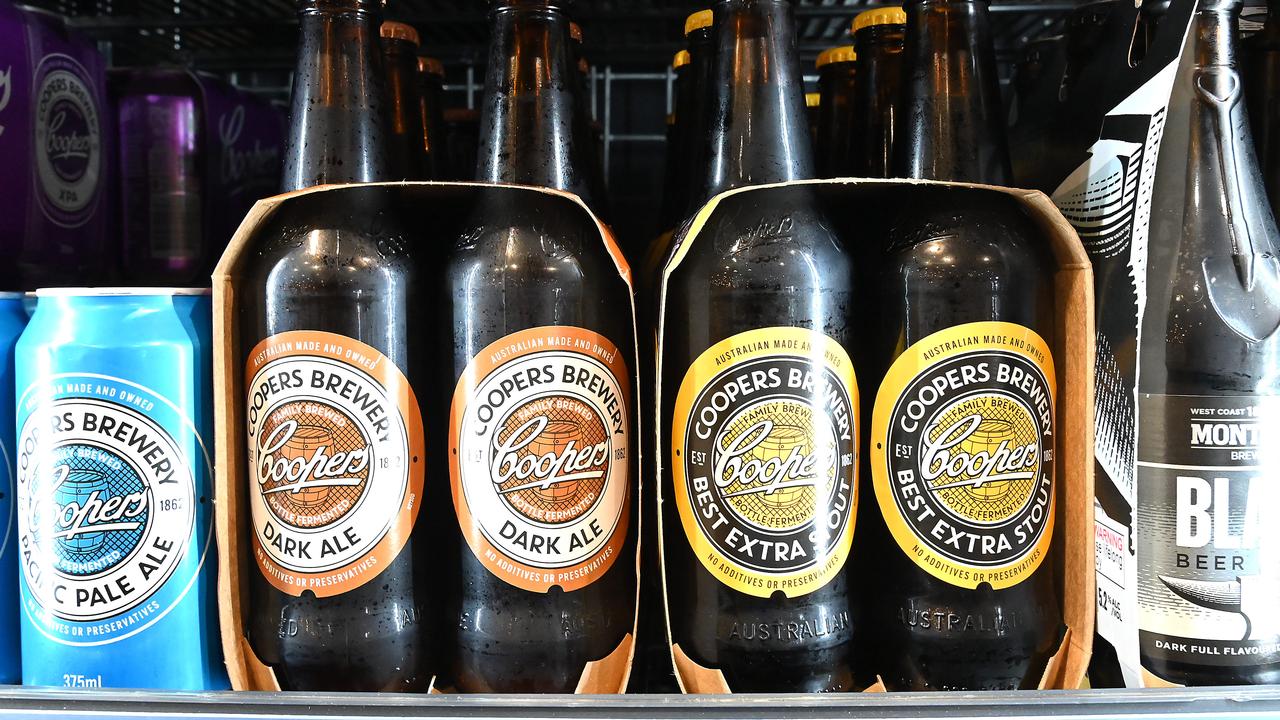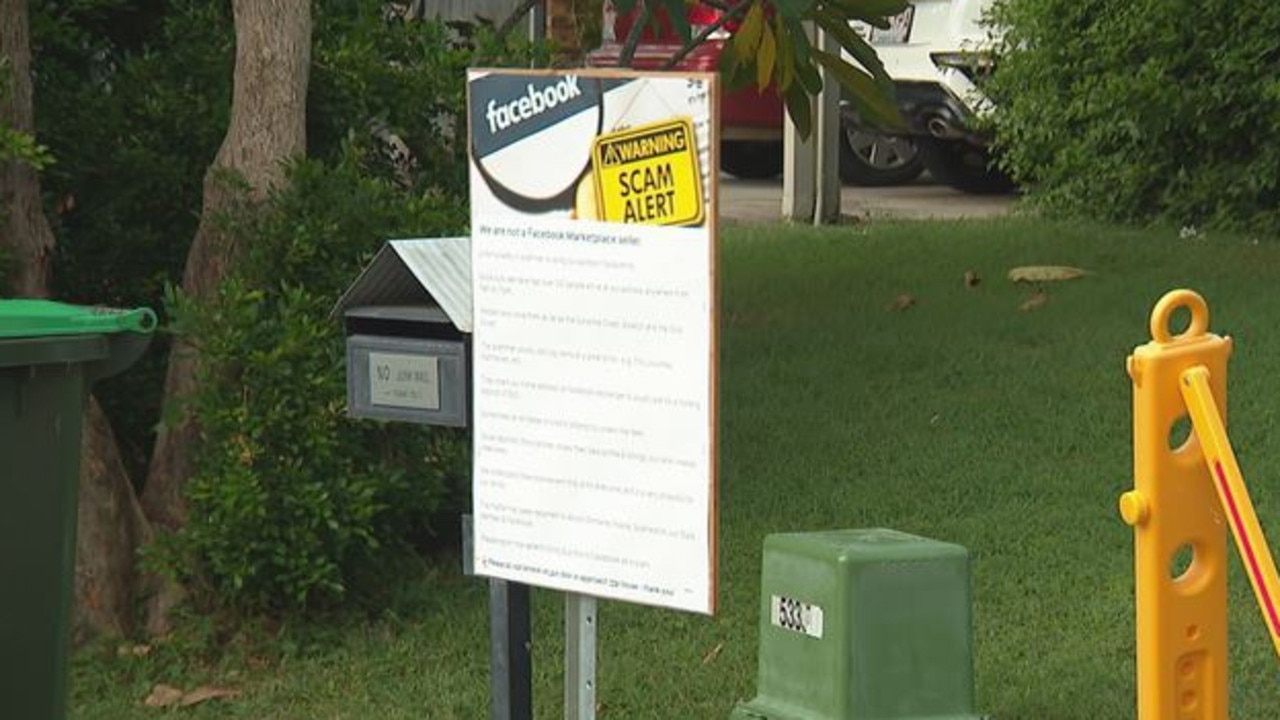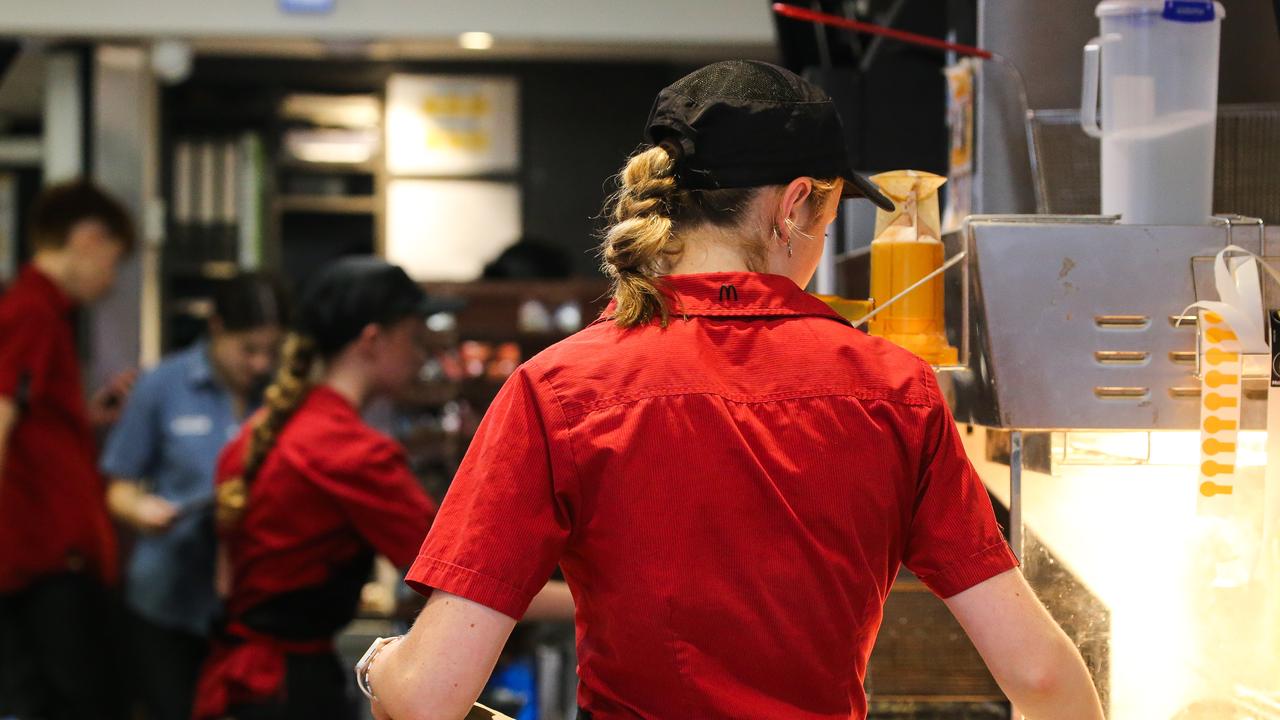Myer’s desperate fight for survival could lead to a price war — and the final demise of Target
A PRICE war could be looming as a wounded Myer battles its way back from the retail abyss. Other retailers may end up being hit.
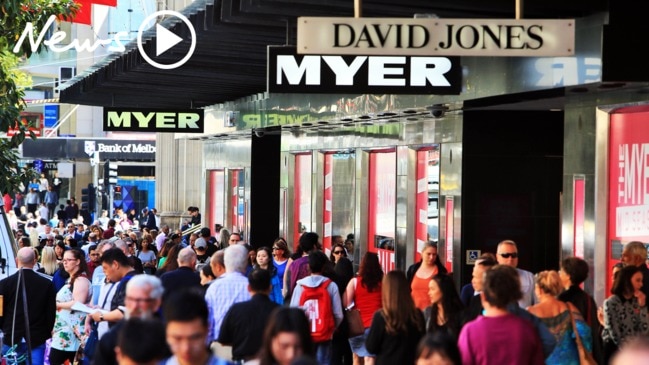
MAKE no mistake, there is so much red over Myer’s accounts it’s a financial bloodbath. What the Melbourne-based grand dame of Australian retail does next could have massive implications for the entire department store sector, as well as how much you pay for a pair of jeans.
But a retail expert has said we shouldn’t write Myer off just yet. While it may have “waved the white flag” in its battle with long-time rival David Jones, Myer’s desperate struggle for survival may lead to the death of another wounded retailer — Target.
Drastic plans are in the works to lift Myer out of the shopping doldrums with the company already flagging a possible price war.
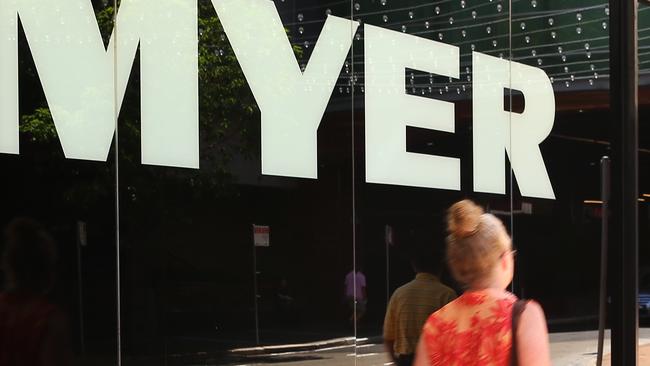
Last week, Myer recorded a loss for the first half of 2018 of almost half a billion dollars, its biggest loss in its 118-year history.
The previous chief executive, Richard Umbers, was unceremoniously turfed out of the firm’s brooding Collins St head office in Melbourne last month. Revenue and sales are down; about the only thing that’s gone up is the rate of shoplifting.
On Wednesday, executive chairman Garry Hounsell, who is taking home $83,000 a month to temporarily step into the CEO role, said Myer needed to trade more “aggressively”.
In case we didn’t know that was code for cutting prices, Mr Hounsell made it more explicit.
“I have renewed the entire team’s focus on products, price and customer service,” he said pointing out Myer had failed to match rivals’ pre-Christmas sales.
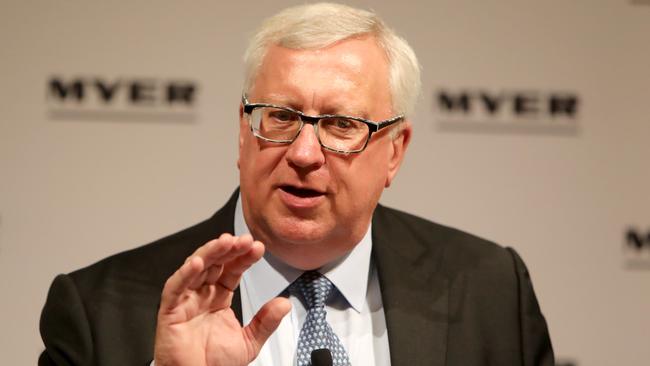
PRICE WAR
Sniff the air in the major shopping centres of Australia and you may already smell the waft of an upcoming price war.
The signs are there this weekend with vibrant catalogues from Myer and David Jones furiously spruiking mid-season half-price sales. Please buy something, anything, they beg.
It’s quite the change of direction from the still live “New Myer” strategy, which Mr Hounsell himself endorsed just a few months ago, reported Fairfax.
In that tome of a document, the word “price” barely appeared, with the emphasis on wooing more affluent customers by polishing up the “in-store experience” with nail bars and food trucks to linger by.
Mr Hounsell has now said the “New Myer” plan was too rushed.
“Some elements of the strategy … which targeted a new high-value customer were rolled out too quickly and didn’t balance enough attention on Myer’s traditional customer base,” he said.
But Professor Gary Mortimer, a retail expert at Queensland University of Technology, said a department store price battle would benefit no one — aside from customers in the short term.
“It would be mistake to start a price war. I have been very critical of the constant 40 to 50 per cent discounting because it conditions people to ask ‘why pay full price’ ever?” Prof Mortimer said. “The new focus should be price and value.”
Keen pricing, for sure, but not wildly undercutting competitors in a rush to financial ruin.
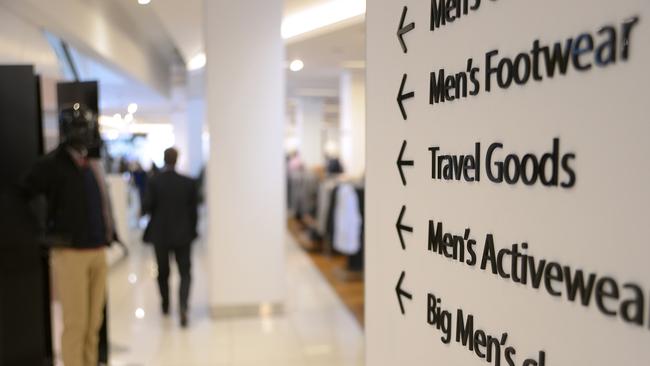
‘WAVING THE WHITE FLAG’
For too long Myer had been stuck between two stools and should choose one.
“Myer has slowly come down to the middle market where we now have trestle tables of chinos yet they’re still trying to sell Wayne Cooper blouses for $300,” Prof Mortimer said.
“So they’ve disenfranchised their core customer and they haven’t convinced new customers that are looking for value.
“Myer need to identify a place in the market I think they’ve waved the white flag at David Jones and seen the high end of the market isn’t big enough for two players.”
The chain should embrace the middle, he said, by ditching their high end brands like Gucci and Chanel and focusing instead on more accessible names like Levi’s and Samsung.
They should also expand private label lines such as the Blaq and Milkshake clothing brands and negotiate with landlords to cut back on floors in underperforming stores.
“Being in the middle can work. There will be people who will pay for a $79 pair of jeans from Myer who won’t spend $11 for jeans in Kmart or $299 in DJs.”
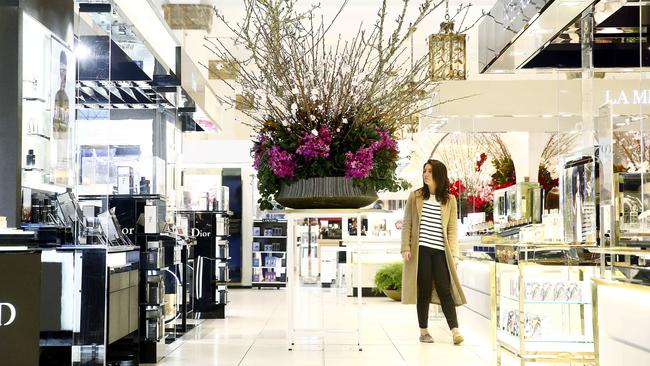
TARGET’S DAYS NUMBERED
And if Myer seriously gives up its battle against DJs, it will be Target that has the most to lose.
In its most recent half year results Wesfarmers, the owner of the discount-mid market hybrid store, announced a $300m writedown against the value of Target.
In February, Wesfarmers managing director Rob Scott said some Target stores could be converted to the Kmart brand, also owned by the Western Australian conglomerate.
“Target is going through its own identity crisis and it doesn’t know if it wants to be Myer or Kmart and it’s going towards Kmart. I think strategically this is the year when (Wesfarmers) will can the Target brand,” Prof Mortimer said.
“Target’s days are numbered and that’s a great opportunity for Myer.”
Indeed, he said, Myer may have betted on Wesfarmers — who can kick back with the success of Kmart — not being too fussed about Target’s survival in its current form.
In the future, Kmart and Woolworths’ Big W chain would dominate the discount end of retail, Myer in the middle and DJs revelling in designer gear.
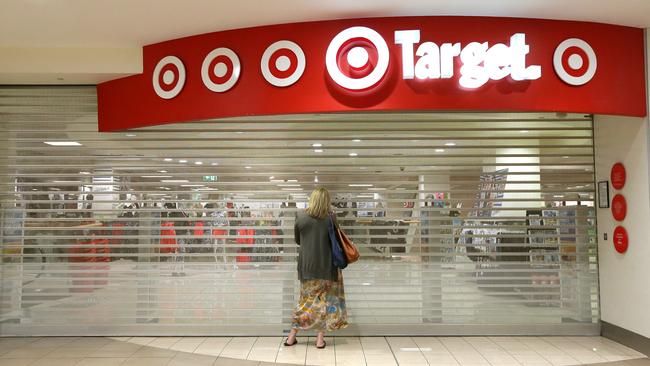
TOO MANY STORES
Former David Jones chief executive Paul Zahra, who left when the store was purchased by South Africa’s Woolworths Holding (unrelated to Australia’s Woolworths), said Myer should shrink in size.
“The most successful department stores in the world have focused on the flagship city locations and key satellite locations (but) they haven’t focused on regional locations so the far flung locations where Myer trades today would have to be reconsidered,” he told the ABC.
So that’s a thumbs up to Sydney’s Pitt Street and Bondi, and Melbourne’s Bourke St and Chadstone — but Wagga may need to worry.
Prof Mortimer wasn’t so sure. Yes, Myer was paying a huge amount in leases to the likes of Westfield but a mid-market retailer could work outside of the major city centres.
“The leases are only a liability if you’re not using the space effectively enough. They could look at increasing the space in the categories that they can dominate in, like apparel and cosmetics,” he said.
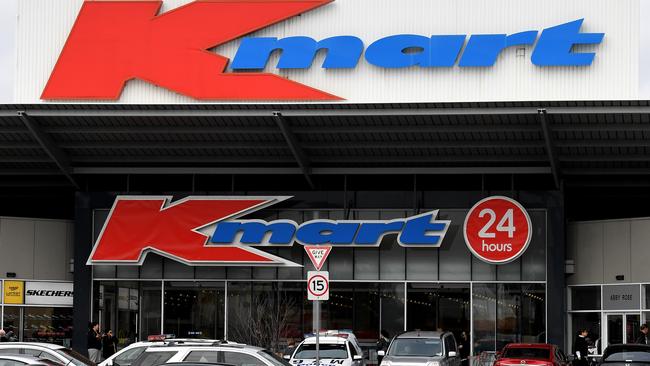
However, the dark clouds for Myer aren’t gathering, they’re already here. Long ago people stopped buying beds or TVs from department stores, now the likes of Zara and H&M want their clothing customers.
There are hushed mutterings of Myer entering into voluntary administration to extricate itself from its financial straitjacket.
Pippa Kulmar, a director at consultancy Retail Oasis, told news.com.au in February that whatever Myer did, it needed to do it fast.
“There’s a genuine want from the Australian public for Myer to succeed; it has a place in our hearts.
“They will need to change. It’s hard but it’s exciting, and particularly when you are most hurting that’s when you’re most open to change.”


